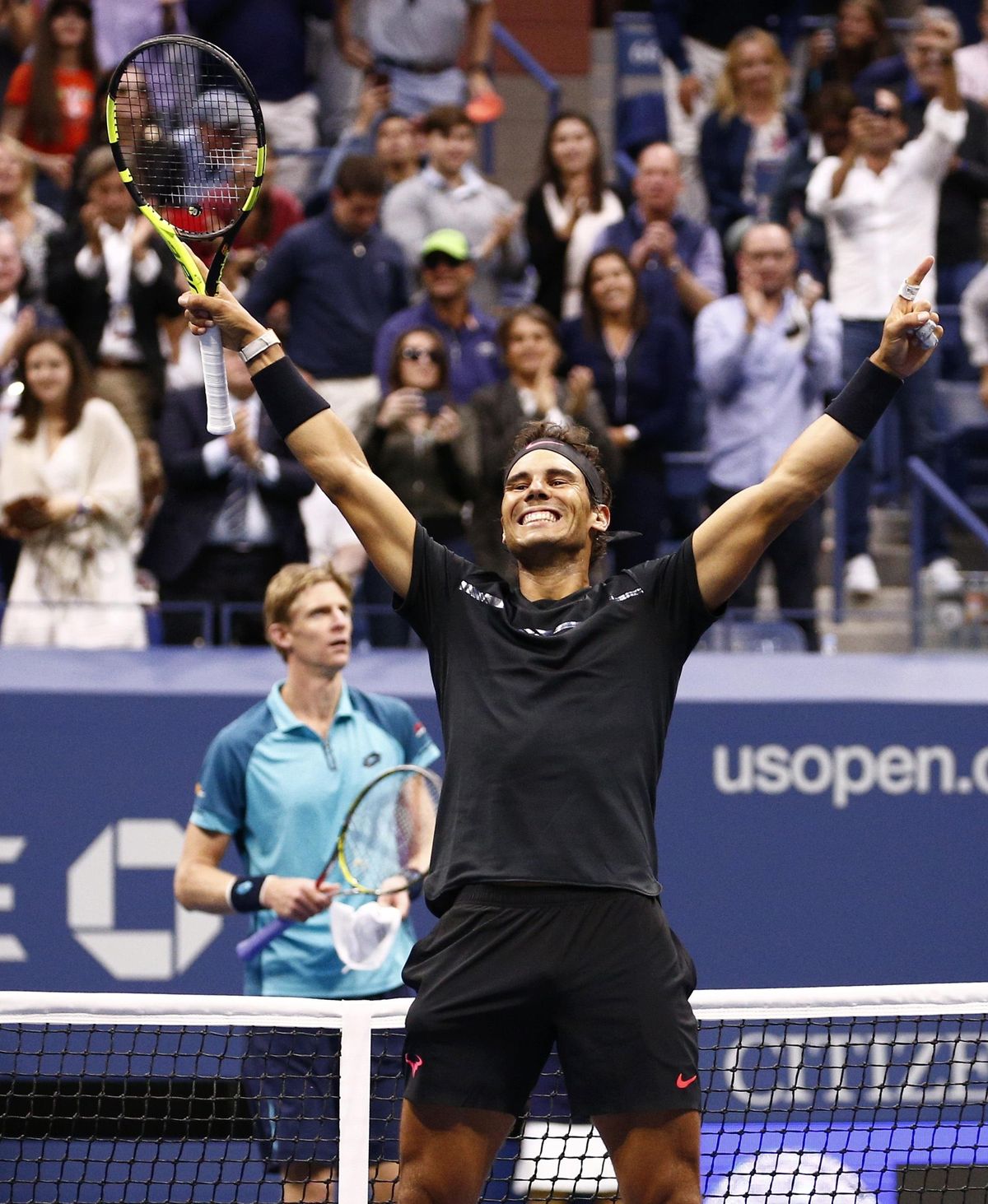Sweet 16: After 2 rough years, Nadal back on top at U.S. Open

NEW YORK – Rafael Nadal entered the 2017 Grand Slam season on a 2 1/2-year drought without so much as one appearance in a major final, let alone a title. He ends it having reasserted himself, capped by a U.S. Open final that shaped up as quite a mismatch – and turned out to be exactly that.
His game at a higher level than it needed to be by the end of an unusually easy path through the field, Nadal overwhelmed Kevin Anderson 6-3, 6-3, 6-4 on Sunday to win his third championship at Flushing Meadows.
“Of course, after a couple of years without competing at this very high, high level,” Nadal said, “very happy to be back.”
The No. 1-ranked Nadal collected his 16th Grand Slam trophy overall, and at his news conference he wore a white T-shirt listing the date and site of each one. Among men, only Roger Federer has more, with 19. Each of those longtime rivals won two of the four majors this season, marking their return to the heights of their sport.
Nadal has dealt with knee and wrist problems, both likely a result of his physical brand of play, over his career, but 2015 and 2016 were his first seasons without reaching at least one Grand Slam final since 2004, when he was still a teenager.
Seems safe to say that, at age 31, he is once again the Nadal of old.
“I mean, I’ve always said he’s one of the, obviously, greatest players of our sport, obviously feeling very confident,” Anderson said. “He seems to have turned around a lot of those injuries he’s experienced the last couple of years. I guess time will tell on that.”
At No. 32, Anderson was the lowest-ranked U.S. Open men’s finalist since the ATP computer rankings began in 1973. The 31-year-old South African never had been past the quarterfinals at any major tournament in 33 previous appearances, so when he won his semifinal on Friday, he climbed into the stands to celebrate.
There would be no such joy for him on this day.
The only beauty of this match was not in its competitiveness – not by a long shot – but in an appreciation for one participant’s absolute superiority.
Forehands whipped up the line. Two-handed backhands ripped cross-court with ferocity. The spinning, back-to-the-net returns of serves that darted in at him at more than 130 mph and helped him break Anderson four times.
“I learned a lot of lessons,” Anderson conceded. “It was a difficult match, up against somebody who has been on that stage over 20 times before.”
Nadal even came up with some terrific volleys, winning the point on all 16 of his trips to the net. Anderson, meanwhile, finished 16 for 34 in that category. Another difference-maker: Nadal never faced a break point, although that was more a reflection of his talent once the ball was in play than any particularly dominant serving.
With Nadal standing way back to receive serves, nearly backing into the line judges, he neutralized Anderson’s most effective skill. Anderson came in having won 103 of 108 service games across six matches, but Nadal accumulated break points at will from the get-go – two in a six-deuce game at 1-all, another two in a five-deuce game at 2-all.
At 3-all, 30-all, Anderson double-faulted to offer up Nadal’s fifth break point of the match, then badly pushed a forehand wide.
That only made the score 4-3 , but the statistics were telling: Anderson had 21 unforced errors, Nadal just four.
“That,” Nadal said, “changed the rest of the match.”